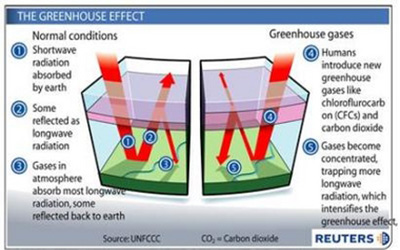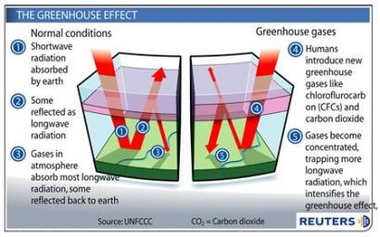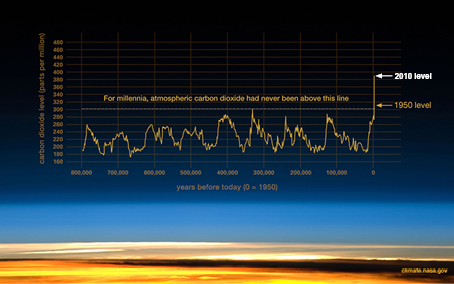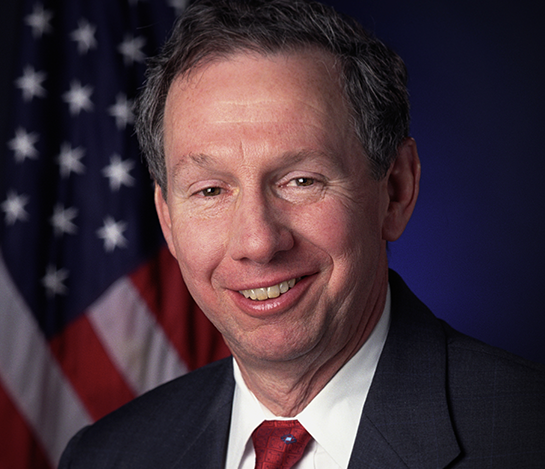co2 can come before and after warming


Before and After: Dr James Hansen has it that the physics are simple—that with more greenhouse gases, heat re-radiated to space is from higher in the atmosphere, where it is cooler and therefore less heat is lost to space. Note 4 should probably have had additional inserted, ahead of carbon dioxide. infographic Reuters
It’s a perfectly good question. If, following ice ages, a rise in carbon dioxide followed global warming, why is the scientific consensus that the current rise is causing global warming?
The short answer is that increased levels of carbon dioxide can both cause, and result from, global warming. Carbon dioxide and the other greenhouse gases absorb and re-radiate some of the infrared heat that is radiated outward by the sun-warmed Earth. Without this blanketing effect, the surface of Earth would be an average bitterly minus 19°.
A heavier ‘blanket’ of greenhouse gases now exists courtesy of human activities, particularly carbon dioxide from the combustion of fossil fuels and methane from livestock farming and rice production. The cosy new blanket has little effect on incoming solar radiation, but absorbs and re-radiates more of the outgoing infrared heat. The net result is anthropogenic global warming.
Meanwhile, back in the Ice Age. Various subtle changes including in atmospheric composition, the Earth’s orbit and tilt (the Milankovitch cycles) and plate tectonics resulted in periods of global warming and cooling. From time to time these changes are large enough to instigate the formation of ice sheets. The trigger for ending, or starting, an ice age is the combined small changes to Earth’s tilt and orbit around the sun. For the first few hundred years of a warming phase, carbon dioxide increase lags behind global temperature increases—cold ocean waters readily soak up the increasing carbon dioxide. Following this lag, the increase in greenhouse gases in turn promotes further warming—feedback.

Before and After: Pre-industrialisation, atmospheric carbon dioxide sat around 280 ppm, which was already elevated beyond pre-agricultural revolution levels. graph National Aeronautics and Space Administration
In the few hundred years since science discovered the phenomena, ice ages have held a fascination, and a dread—of the return of a climate so cruelly cold that life would seem barely worth enduring. This understandable fear is also deeply ironic, on two counts:
- It is probable that the ‘next’ ice age would have failed to bite, because the tilt and orbit phases are 10 000 years out of phase—providing civilisation with the prospect of a relatively benign climate for the next 100 000 years.
- The magnitude of human impact on climate is swamping the relatively feeble natural cooling cycle.
Regardless of whether or not another ice age would have resulted, the Arctic should currently be accumulating more ice. Instead it will soon be ice-free end-of-summer, probably for the first time in 125 000 years.
NASA Goddard Institute for Space Studies director James Hansen calculates that as long as the human species exists, its global warming ways will easily overwhelm any natural tendency for climate to tip into another ice age. This is no throwaway line; Dr Hansen makes the statement in three separate places in Storms of My Grandchildren, published 2009. Just one chlorofluorocarbon factory would be sufficient, he says. Bizarrely, capping and trading has resulted in chlorofluorocarbon HCFC 22 production being ramped up in India and China in byzantine schemes to claim credits on a by-product, the arch-greenhouse gas HFC 23. Little wonder Hansen loathes cap-and-trade and champions a carbon tax at the mine, port and well.

Home Planet Eraser: Past-administrator Michael e Griffin removed the inconvenient first line of the National Aeronautics and Space Administration mission statement. image National Aeronautics and Space Administration
But back to that perfectly good question: Does carbon dioxide cause, or result from, global warming? The paleoclimate role of carbon dioxide is increasingly well understood. In fact more progress is possibly being made in understanding past global warming events than the present, human-caused one. James Hansen has unsuccessfully pleaded with the National Aeronautics and Space Administration to undertake satellite-assisted studies of the role of aerosols, an area that is little studied and poorly understood. But instead, the big bucks continue to be spent on simple-minded Buck Rogers –style manned space missions. Meantime, at the height of the attempts to muzzle Hansen, the National Aeronautics and Space Administration’s then administrator, Michael e Griffin, went to the extraordinary length of removing the first line of the mission statement:
To understand and protect our home planet
Griffin, in time, was removed by President Barack Obama, who has also cancelled the $9 billion Constellation moon project and funded a replacement for the Orbiting Carbon Observatory, the carbon dioxide –tracking satellite that failed to reach orbit in its February launch. Having had the courage to dump Dubya’s dopey return-to-the-moon plan, the president must now muster the courage of John f Kennedy, and make protection of the home planet the agency’s main mission.
The urgency and excitement of that life and death mission would soon ensure every schoolboy, and schoolgirl, would readily be able to explain the role carbon dioxide plays…
…both before and after global warming began.
See also Storms of My Grandchildren by James Hansen, Bloomsbury 2009.
